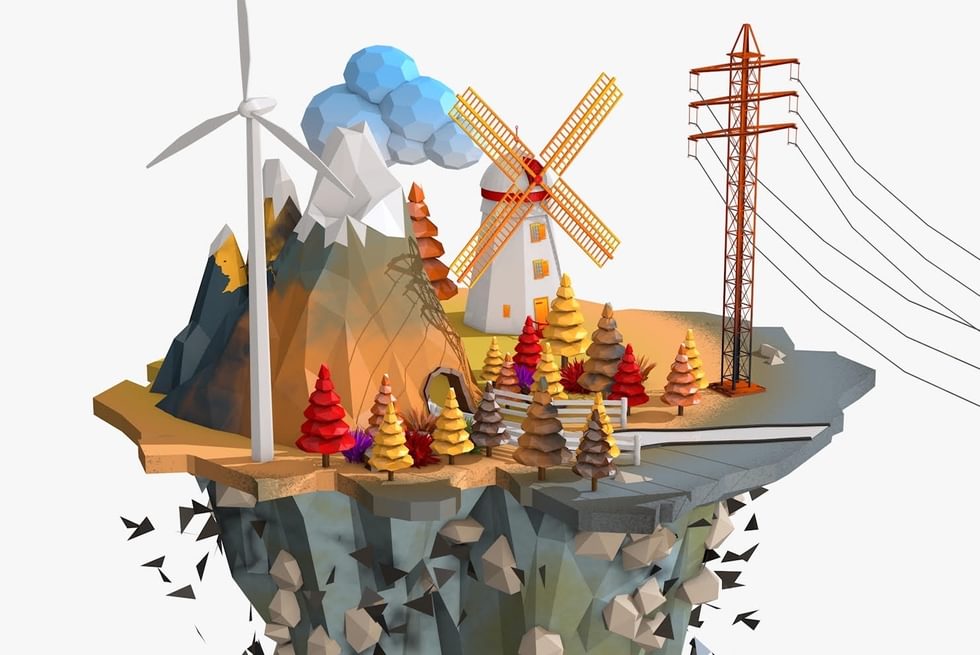Geometries
From the Series: Speaking Volumes
From the Series: Speaking Volumes

My interest in location, which has more recently developed into an interest in geometries, began with earthquakes, both literal and political, in the Greek-Albanian border region of Epirus. In 1992, I was asked to explore residents’ attitudes toward their tectonically unstable landscapes. There are regular earthquakes, land fractures, and landslides in the region, and my task was to find out how rural people who lived off the land dealt with this unstable ground beneath their feet. Geoff King, a geophysicist who was part of the research project, visited Epirus and told me about mountains bobbing up and down, lakes filling and emptying, and the seabed ending up blended into the soils on the top of hills (King, Sturdy, and Whitney 1993). Later, goats would seek out those churned places in the hills to get enough salt in their diet.
All of this gave me a sense of a literal topological landscape, as opposed to the more metaphorical topologies often discussed in the social sciences (see Allen 2011). The skin of the earth was being stretched, twisted, crumpled, folded, cracked, and bent like an old and decaying rubber sheet. Confronted with the sheer scale at which geophysics operates (the Earth’s crust undulating over a period of hundreds of millennia), the people of Epirus, who were the focus of my own attention, seemed like two-legged ants, each living for less than an instant and moving around on this sheet with their animals. In fact, they seemed indifferent to their constantly morphing landscape, which was a problem for me, as I was supposed to be researching their attitudes toward it (see Green 2005, 26–29).
These transformations were one thread I was following. But there were others, as this was the early 1990s and a different kind of shape-shifting was going on at the same time. In late 1991, the Albanian communist regime collapsed and the Greek-Albanian border reopened after almost fifty years of tight closure. That political earthquake changed the shape of the region overnight, making a previously invisible and impassable section of it suddenly come into view. These were political topologies at work.
Experiencing how Epirots lived with and spoke about all of this gave rise to my long-term interest in borders, both political and physical, and in how shifts in borders can change how people are located in the world. What I learned in Epirus was that the shape of places changed regularly, and that it mattered to the people who inhabited them.
Yet the geometry of these issues still eluded me, for I was focusing on the people and their relations with places rather than taking the spatial element literally. At the time, I drew on the research of Michael Herzfeld (1986, 1997) to think through the ideological and historical changes that generated shifts in the political relationship between people and places. I also drew on the work of Marilyn Strathern (1992, 1996) to explore how the logic of people’s own social relations might cross-cut the politically imposed logic of nationality. Working with these ideas made it possible to understand how the Greek-Albanian border made spatial sense in one way (according to the logic of nation), but not another (according to the logic of kinship).
There was more to say, though. I came to understand that the Greek-Albanian border not only contradicted the spatial logic of social relations between people and place; it also contradicted the previous Ottoman political logic in that region. At that point, geometry entered my work for the first time. I drew on the metaphor of fractal geometry to understand the difference between the political logic of the Ottoman empire as opposed to that of nation-states (Green 2005, 128–58). But I was still thinking metaphorically and in terms of representations, not in terms of the performative creation of spatial location. For instance, I argued that the ideologically inflected meaning of “the Balkans” had developed to represent chaos—toxic conditions that repeated themselves infinitely and in the same way at every level, defying both scale and the logic of a three-dimensional Euclidean world in which shapes could be neatly separated out into lines, squares, circles, and triangles. According to this perspective, borders would never settle down but would constantly morph into something else.
More recently, and drawing on Doreen Massey’s (2005) ideas about space and power geometries, it occurred to me that such geometries (Euclidean as well as fractal) might be worth thinking about not only as a metaphor for diverse logics and political ideologies cross-cutting one another, but also in more performative and three-dimensionally spatial terms: as the coexistence and creation of overlapping, layered, and perhaps entangled locations in the same space (Green 2015, 2017). Watch this space, as they say.
Allen, John. 2011. “Topological Twists: Power’s Shifting Geographies.” Dialogues in Human Geography 1, no. 3: 283–98.
Green, Sarah. 2005. Notes from the Balkans: Locating Marginality and Ambiguity on the Greek-Albanian Border. Princeton, N.J.: Princeton University Press.
_____. 2015. “Making Grey Zones at the European Peripheries.” In Ethnographies of Grey Zones in Eastern Europe: Relations, Borders and Invisibilities, edited by Ida Harboe Knudsen and Martin Demant Frederiksen, 173–86. New York: Anthem Press.
_____. 2017. “Thinking through Proliferations of Geometries, Fractions and Parts.” In Redescribing Relations: Strathernian Conversations on Ethnography, Knowledge and Politics, edited by Ashley Lebner, 197–208. New York: Berghahn.
Herzfeld, Michael. 1986. Ours Once More: Folklore, Ideology, and the Making of Modern Greece. New York: Pella Publishing.
_____. 1997. Cultural Intimacy: Social Poetics in the Nation-State. New York: Routledge.
King, Geoffrey, Derek Sturdy, and John Whitney. 1993. “The Landscape Geometry and Active Tectonics of Northwest Greece.” Geological Society of America Bulletin 105, no. 2: 137–61.
Massey, Doreen. 2005. For Space. Thousand Oaks, Calif.: SAGE.
Strathern, Marilyn. 1992. After Nature: English Kinship in the Late Twentieth Century. New York: Cambridge University Press.
_____. 1996. “Cutting the Network.” Journal of the Royal Anthropological Institute 2, no. 3: 517–35.